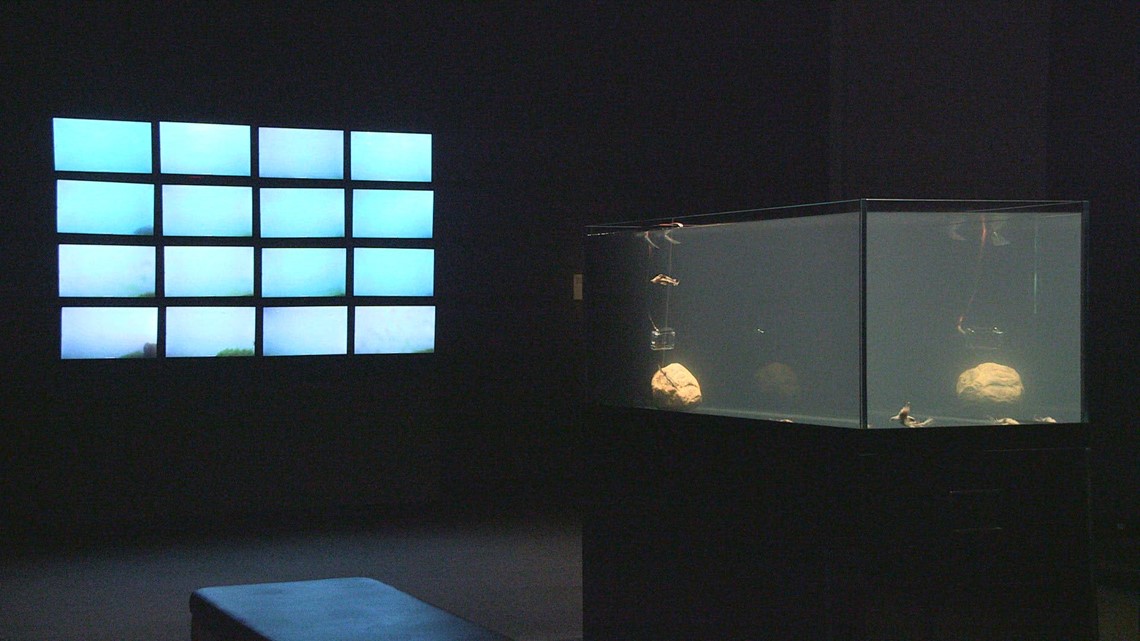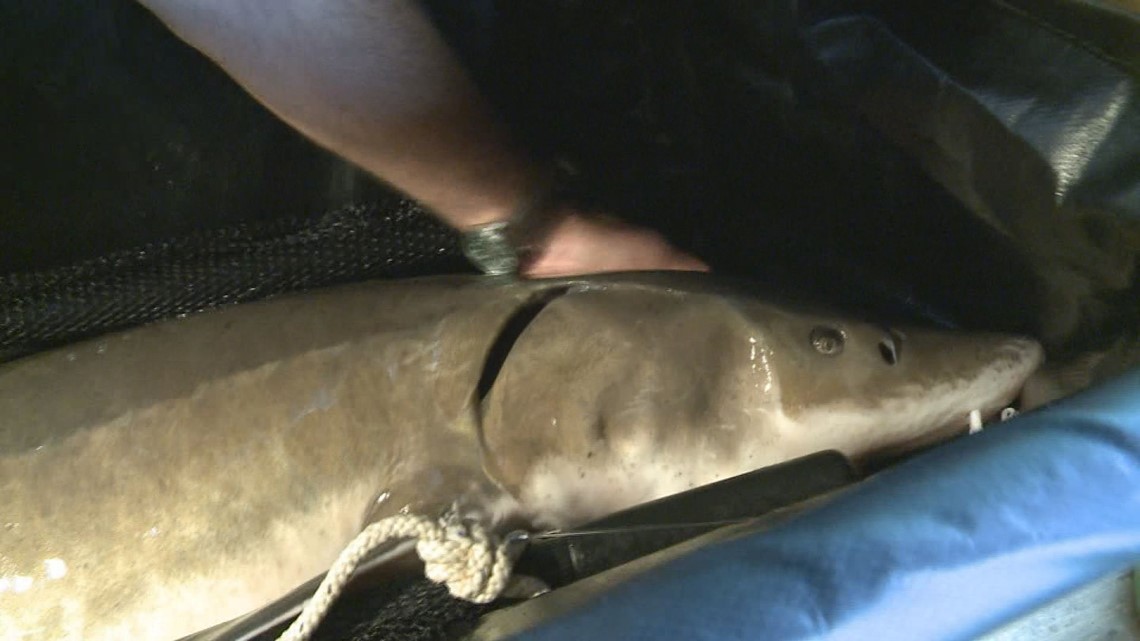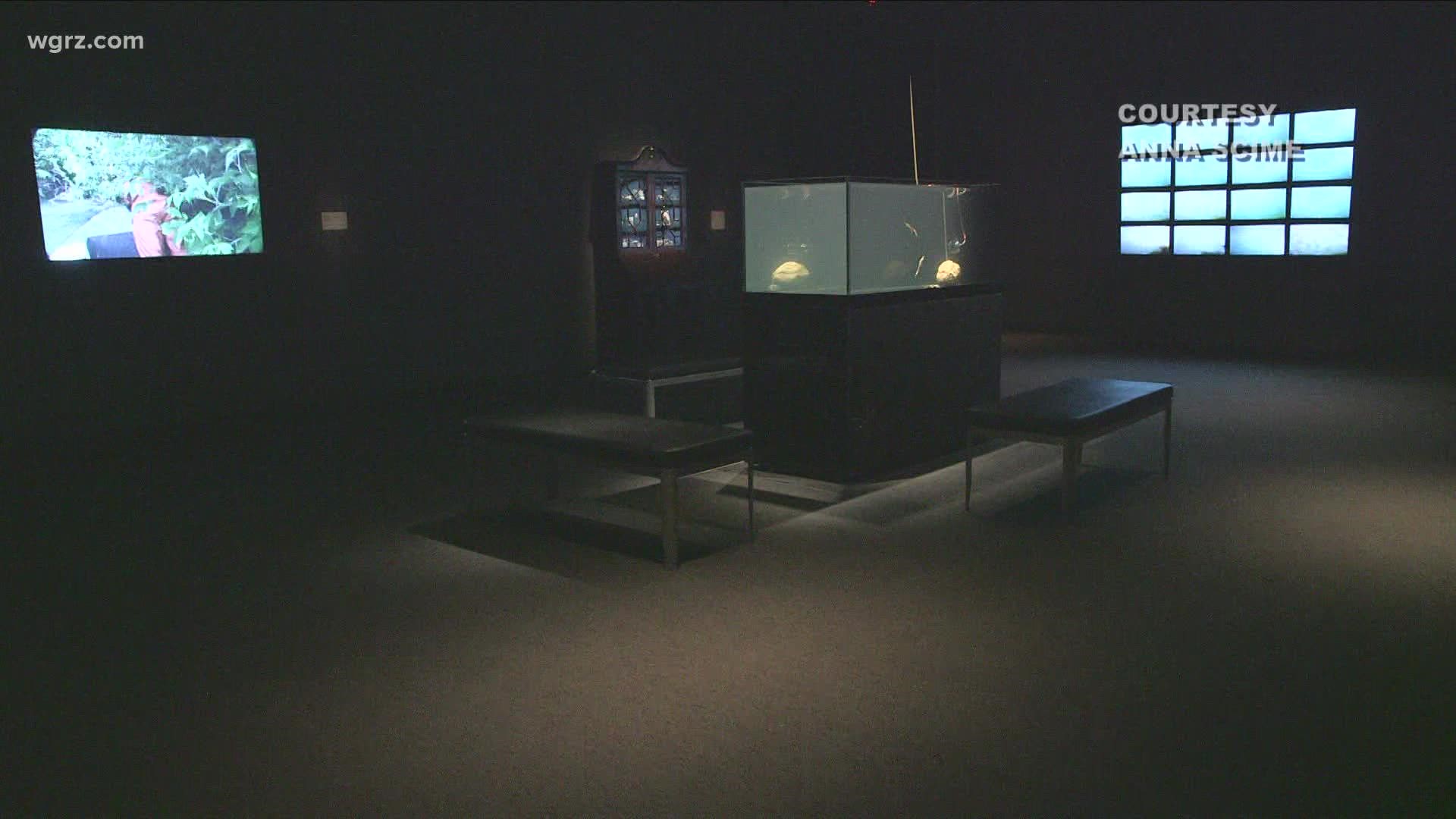BUFFALO, N.Y. — The natural world has been an inspiration to artists for centuries, and the muse of Nature still drives artists to create.
An ongoing exhibit at the Burchfield-Penney Art Center focuses on the Sturgeon, a prehistoric fish that is listed as endangered throughout the world.
Anna Scime created the exhibit.
"These are ancient fish, I mean, they're amazing! So I thought, right now was a good time. The state is looking at these fish and their designation, the federal government is as well," said Scime.
The installation aims to drive awareness through a variety of mediums including video feeds from their habitat in the Niagara River to an aquarium with live Sturgeon, which have recently been released into the river.
"There's a ton of documentation about wild spawning populations, and study and fieldwork, research that's gone on over the last decade," Scime said. "There are prints, there are sculptures, there are curiosity cabinets, where you'll find all sorts of interesting things like ancient coins, trilobites, and ammonites, things that represent the mass extinction they've survived."


The Sturgeon is considered the most endangered group of species on earth. Pollution and habitat degradation are contributing causes but the main cause of their decline is overfishing.
Sturgeon are prized for the eggs, which are made into caviar, a rare and very costly delicacy. Because they are taken during their spawning period, Scime says that the damage done has been devastating.
"Because they don't spawn like normal fish, they're not one, two, three years old when they're spawning, they're somewhere like fifteen to twenty if they're male, or even fifteen to thirty if they're female. They might spawn every one to three if they're male or four to seven if they're female. You can decimate a population during the spawn."


Sturgeon can grow to great size and live up to a hundred years! We are fortunate in WNY to have a wild population in the Niagara River, and fisheries experts have worked hard to protect them.
"Protected habitat was essential to their survival and now we really need to look at giving them more habitat, all of these fish, even ourselves, clean water, clean sediment, the clean ecosystem at the shore. It's really all connected."
The installation, 'Lake Sturgeons Guide For Surviving The Anthropocene' runs at the Burchfield Penney Art Center through November 28.
For more information, click here.

